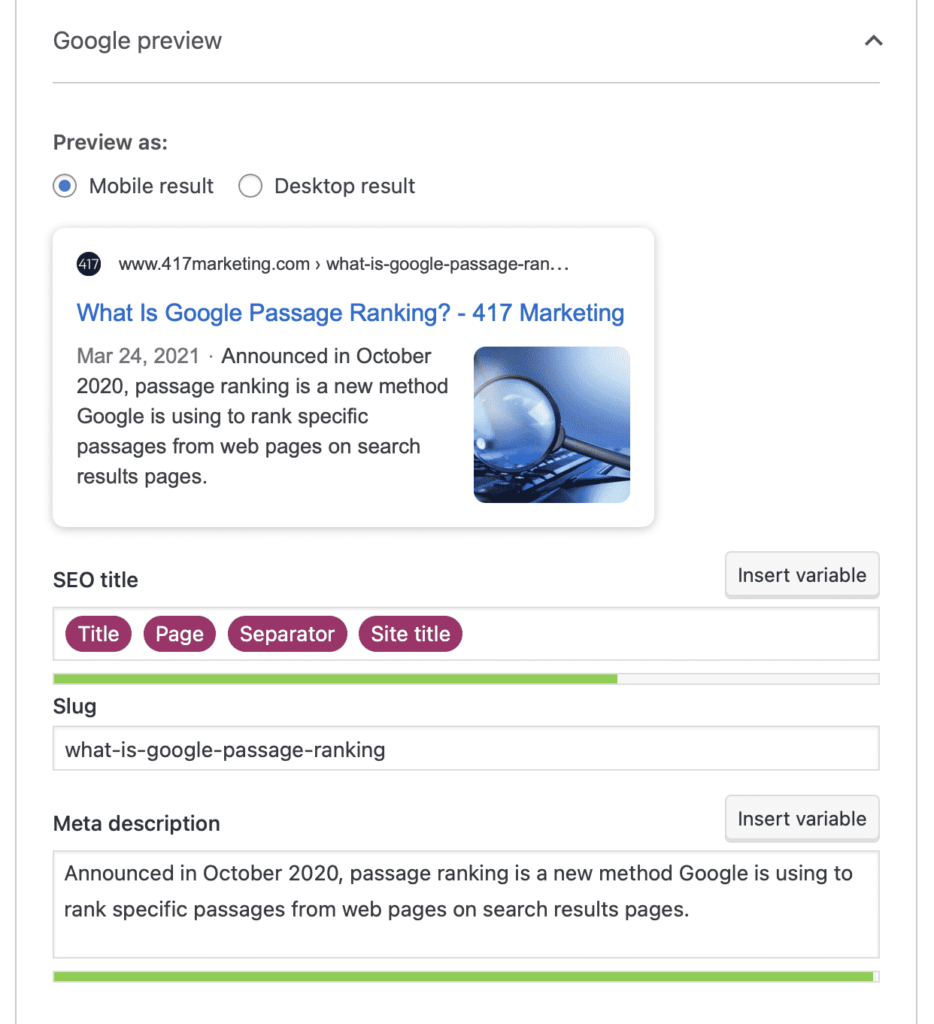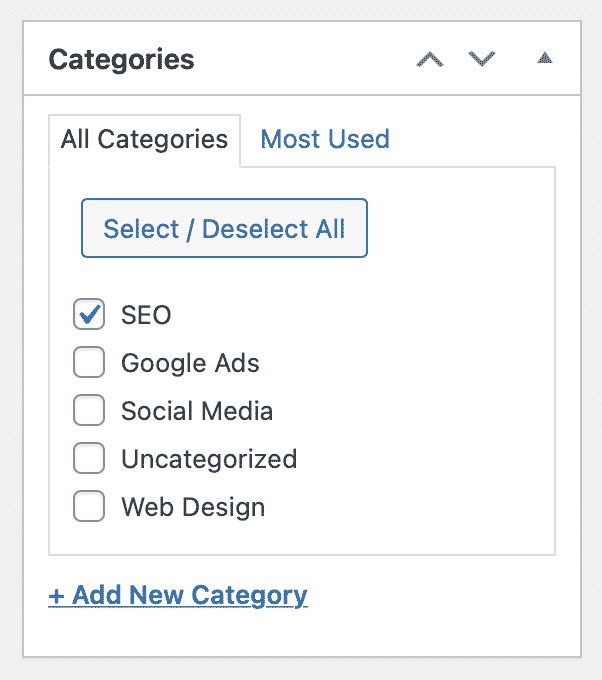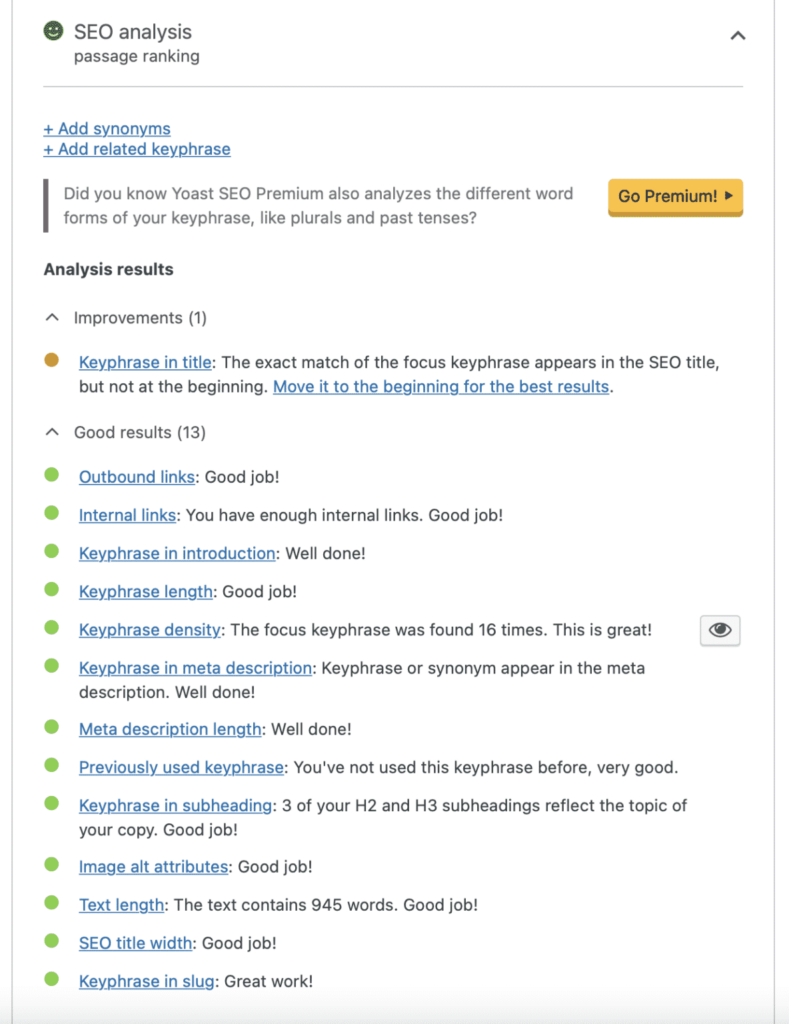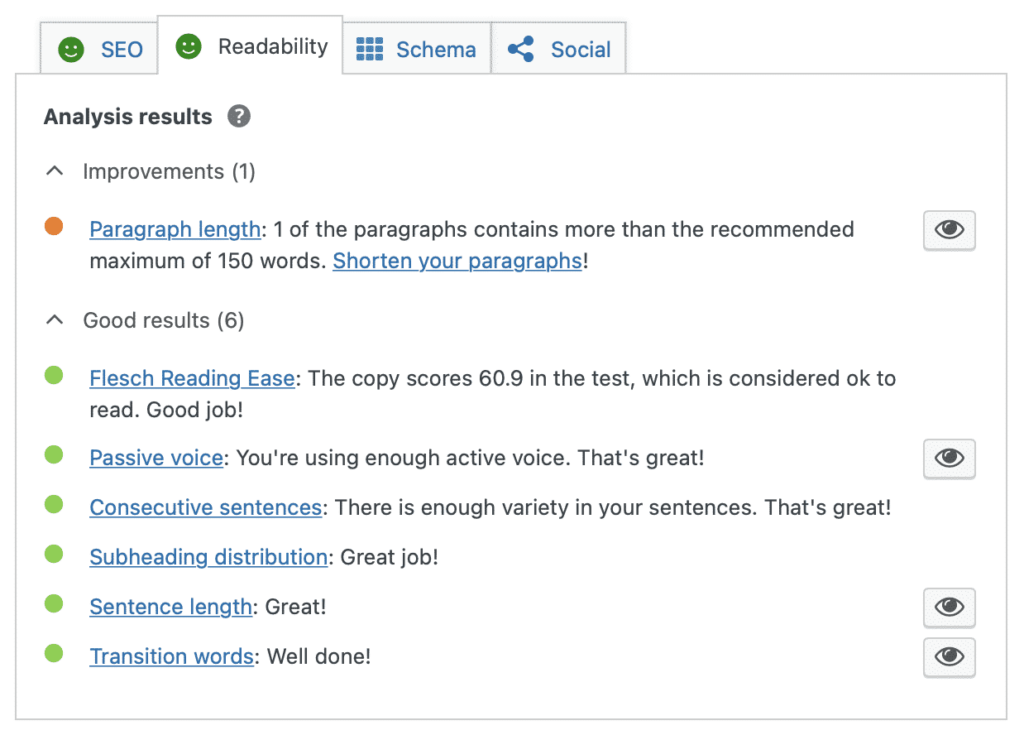Last Updated: May 21, 2021
Just about anyone can create and write a WordPress blog – your eleven-year-old cousin, your elderly neighbor, your doctor, your grocer, you! – but very few know how to optimize a WordPress blog post properly. It’s a simple process that too many bloggers overlook or ignore, but if you want your blog to be read by more than just your family and friends, optimization is essential. And I’m pleased to say that anyone can do it with the right plug-in and a bit of SEO knowhow. So, if you’re interested in learning how to optimize a WordPress blog post, stick around. This will only take a minute, I promise . . .

How to Optimize a WordPress Blog Post
1. Install the WordPress SEO Plugin by Yoast.
There are many SEO plugins available for WordPress, but Yoast’s version is (quite frankly) the best. Why?
- First of all, there is a free version available. Can’t beat that! If you’re interested in more features and support, look into the premium version.
- Second, it offers everything you’ll need to optimize your blog.
- Third, it’s very intuitive and efficient. It explains how to optimize a WordPress blog post in simple language that anyone can understand.
If you don’t believe me, trust Yoast’s legion of fans. The plugin has been downloaded over 300 million times, making it the most downloaded SEO plugin, and has an average score of 4.9/5 stars. So if you’re looking to improve your blog’s SEO, trust Yoast. You won’t be disappointed.
(This is not a paid advertisement, by the way – just a happy customer professing her love for Yoast!).
2. Choose your focus keyword (or keyphrase).

Now that you have the Yoast plugin installed, figure out your focus keyword (also called a keyphrase). This is the word or phrase that you’re hoping the blog post will rank for most in Google. Once you’ve input a keyword, the SEO plugin can evaluate your blog post’s content and provide feedback to improve your chances of ranking highly. If you’re having trouble choosing a keyword, keep these tips in mind:
- Choose a phrase that Google users will naturally type into the search box on their own.
- A long-tail keyword will typically increase your chance of ranking highly.
- Research potential keywords to find out their search volume (i.e., how often they’re searched for by users).
- Google your potential keyword to better understand what users are looking for when they search for that term.
- Avoid using the same focus keyword for multiple blog posts or pages.
The SEO plugin will let you know if your keyword is too long or uses too many function words (words that carry little meaning, like the, and, have, that, etc.).
3. Use the focus keyword in your SEO title.
The SEO title will be displayed in Google’s search results, so choose it carefully. Include the keyword at the beginning if possible, and use your blog/company name as well. Although there isn’t a character limit, if your SEO title is too long, it won’t appear in full on the search results page. You have a width of 600 px to work with. If you go over this width, the plugin will let you know by displaying a red line underneath. Be sure to check both the “mobile result” and “desktop result” to ensure the SEO title is an appropriate width.
4. Write a meta description.
This will be displayed beneath the SEO title when your blog post appears on Google. You’re limited to 156 characters (again, the plugin will let you know how many characters you have left). Use the focus keyword at least once when writing your meta description.
5. Check the slug.
After you type in your blog post’s title, WordPress will automatically use the title as the slug of the blog post’s permalink. You will see the slug listed in the SEO plugin as well. If you used the focus keyword in the title, it should automatically be included in the slug, but it’s a good idea to check anyway. Is the slug that WordPress automatically created too long for your liking? Feel free to shorten it, but remember that it needs to include the focus keyword.
6. Review the “Google Preview.”
The plugin generates a preview of what your blog post will look like on Google, updating each time you add in more text. Be sure that it looks how you hoped and expected. Check both the “Mobile result” and “Desktop result.”

7. Include your focus keyword in your blog post.
Ideally, the keyword should account for about 0.5 to 3.0 percent of your post’s body copy, and it should always be present in the first paragraph of the blog post. Try not to lower the quality of your writing to accommodate the keyword.
8. Use the keyword at least once in a subheading.
Do this by highlighting the text and changing its status from “Paragraph” text to “Heading 2,” “Heading 3,” etc.
9. Include an image.
Be sure to choose a high-quality photo that you’re legally allowed to use. In addition, use alt text to describe the content of the image briefly. Imagine someone has asked you, “What is that a picture of?” Review our Best Practices for Blog Post Images for more information.
10. Categorize the blog post.
On the right side of the page, you’ll see a box labeled “Categories.” Place a checkmark in the box that best fits the topic of the blog post. If you haven’t used categories previously, you’ll need to spend a little time deciding on a few broad groupings for your blog posts and creating the categories.
Note: Categories and tags are not the same thing.

11. Include an outbound link to a page of high authority.
If you’re ever in doubt, Wikipedia is a great source.
12. Check the plugin’s “SEO Analysis.”
Scroll down to SEO Analysis and check out your results (Note: you may need to click “Save Draft” to see updated results). The SEO Analysis grades your blog post on its optimization. You’ll see that it gives you green dots and positive feedback on things you’ve done well (such as using a new keyword and including the keyword in the first paragraph of copy). Yellow dots indicate items that should be improved, and red and orange dots point out major failings in your post’s SEO.

The SEO Analysis reviews all of the following factors:
- Image alt attributes
- Internal links
- Keyphrase density
- Keyphrase in introduction
- Keyphrase in meta description
- Keyphrase in slug
- Keyphrase in subheading
- Keyphrase in title
- Keyphrase length
- Meta description length
- Outbound links
- Previously used keyphrase
- SEO title width
- Text length
13. Make needed changes, aiming for an SEO Analysis with only green dots.
Of course sometimes it will be impossible to make every red/orange dot turn green, but do your best. The Yoast plugin does a good job of succinctly explaining how to optimize a WordPress blog post. If you follow its simple instructions, you should end up with a well-optimized blog post.
14. Review the “Readability.”
Finally, take a look at the plugin’s Readability tab. For this component of the plugin, Yoast employs an algorithm designed to determine how easily users can read and understand your text. It looks at the following factors:
- Consecutive sentences
- Flesch Reading Ease
- Paragraph length
- Passive voice (check out our blog post The Passive Voice and SEO)
- Sentence length
- Subheading distribution
- Transition words

As you can see, the Readability tab also uses a dot system in which you’re aiming for green dots. However, gaining green dots is a little less important when it comes to Readability. Yoast’s algorithm isn’t perfect and doesn’t work well for all websites. Because it’s a computer program and can’t actually read like a human, its ability to assess text quality and readability is limited. So if you receive a red dot for Readability overall, don’t automatically assume that your copy is rubbish and requires major edits. Review the factors that received red dots, and decide if you agree with the plugin’s assessment.
This is especially important in certain industries that use terms not frequently searched by the average user. As Yoast admits, “We want everyone to be able to read and understand content, but we also know that there are industries where the language used is totally different from what most people would use. That’s perfectly fine. Find out what works for you.”
_____
That’s all there is to it! You’ve just learned how to optimize a WordPress blog post. Don’t be intimidated by the number of steps because they’re all very simple. Once you have the body copy written, learning how to optimize a WordPress blog post should only take 10-15 minutes. Swift and simple, but so worth it!
If you’re hoping to build a beautiful, effective website that ranks highly on Google, contact 417 Marketing for help. Our team of knowledgeable, creative, and passionate professionals specializes in SEO, web design and maintenance, and Google Ads, and we have successfully completed over 700 websites since our inception in 2010. Click here to contact us and learn more about what we can do for your company.


